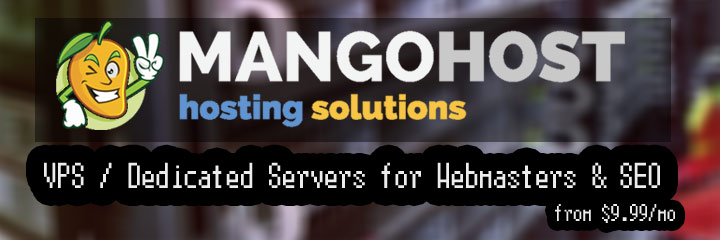
 Get the solution ↓↓↓
Get the solution ↓↓↓
I am creating a menu list with php. I want the user to change name and the discount variable in the list. So here is an image of the list:list with items, so for each list item and subitems, there's a button which must open a popup and pass the variables belonging to that listitem, like names and discount variable into the form input field, so the user can adjust it from the old value. I use javascript to open and close the form, and want it also to put the php variables (obtained from a database) into that form. So here is my piece of code:
javascript:
<script>
function updatepopup(**$name**, $discount){
document.getElementById("updatedata").style.display = "block";
document.getElementById("fnaam").value = **$name**";
document.getElementById("fkort").value = $discount;
}
function closeform(){
document.getElementById("updatedata").style.display = "none";
}
</script>
php:
<ol class='tree'> ";
if ($currLevel == $prevLevel) echo " ";
echo '
<li>
<label for="subfolder2">'.$category['name'].'</label>
<label> '.$category['discount'].'%</label>
<input type="checkbox" name="subfolder2">
<form id="updatedata" method="POST">
<label for="fnaam">Naam: </label>
<input type="text" id="fnaam" name="fnaam" value="'.$category['name'].'">
<label for="fkort">Korting</label>
<input type="number" id="fkort" name="fkort" value="'.$category['discount'].'">
<button id="closebutton" onclick="closeform()">X</button>
<button type= "submit"> </button>
</form>
<button onclick="updatepopup()"><i class="fa-solid fa-pen-to-square"></i></button>
';
if ($currLevel > $prevLevel) { $prevLevel = $currLevel; }
$currLevel++;
createTreeView ($array, $categoryId, $currLevel, $prevLevel);
$currLevel--;
}
}
if ($currLevel == $prevLevel) echo "<li><button>+</button></li></li>
</ol>";
}
?>
So I have read many solutions to pass a string to a javascript function but not a single one would help. I only get something like that done with numbers, but I also want to sent a string into that input field. So this is what I want to get: what I want
You're trying to mix PHP with JavaScript, which should be avoided if possible. There are other ways to pass PHP values to JavaScript, like setting them as HTML attributes.
My approach would be to create a<form> element for each list item and output your PHP$category values in hidden<input /> elements.
<!-- Start list -->
<ol class='tree'>
<li>
<form class="js-update-data">
<label for="subfolder2"><?= $category['name']; ?></label>
<span><?= $category['discount']; ?>%</span>
<input type="checkbox" name="subfolder2">
<input type="hidden" name="name" value="<?= $category["name"]; ?>"/>
<input type="hidden" name="discount" value="<?= $category["discount"]; ?>" />
<button type="submit"><i class="fa-solid fa-pen-to-square"></i></button>
</form>
<!-- Nested list -->
<ol class='tree'>
<li>
<form class="js-update-data">
<!-- Structure for every list item.. -->
</form>
</li>
</ol>
</li>
</ol>
<!-- End list -->
<!-- Form to show/hide & update -->
<form id="updatedata" method="POST">
<label for="fnaam">Naam: </label>
<input type="text" id="fnaam" name="fnaam" value="">
<label for="fkort">Korting</label>
<input type="number" id="fkort" name="fkort" value="">
<button type="button" id="closebutton">X</button>
<button type="submit"> </button>
</form>
Then listen forsubmit events on these forms. When a form gets submitted, make sure thepreventDefault() method on the event is called. This will prevent a reload of the page and allows you to write your own behavior.
Extract the values from the submitted form and pass them to yourupdatepopup function.
const forms = document.querySelectorAll('.js-update-data');
for (const form of forms) {
form.addEventListener('submit', event => {
event.preventDefault();
const formData = new FormData(event.target);
const name = formData.get('name');
const discount = formData.get('discount');
updatepopup(name, discount);
});
}
const closeButton = document.getElementById("closebutton");
closeButton.addEventListener('click', closeform);
function updatepopup(name, discount){
document.getElementById("updatedata").display = "block";
document.getElementById("fnaam").value = name;
document.getElementById("fkort").value = discount;
}
function closeform(){
document.getElementById("updatedata").style.display = "none";
}
This example runs with pre-filled values. The only job you have is to set the values in the right spot.
const forms = document.querySelectorAll('.js-update-data');
for (const form of forms) {
form.addEventListener('submit', event => {
event.preventDefault();
const formData = new FormData(event.target);
const name = formData.get('name');
const discount = formData.get('discount');
updatepopup(name, discount);
});
}
const closeButton = document.getElementById("closebutton");
closeButton.addEventListener('click', closeform);
function updatepopup(name, discount){
document.getElementById("updatedata").hidden = false;
document.getElementById("fnaam").value = name;
document.getElementById("fkort").value = discount;
}
function closeform(){
document.getElementById("updatedata").hidden = true;
}form[hidden] {
display: none;
}<!-- Start list -->
<ol class='tree'>
<li>
<form class="js-update-data">
<label for="subfolder2">Test 1</label>
<span>25%</span>
<input type="checkbox" name="subfolder2">
<input type="hidden" name="name" value="Test 1"/>
<input type="hidden" name="discount" value="25" />
<button type="submit"><i class="fa-solid fa-pen-to-square"></i>edit</button>
</form>
<!-- Nested list -->
<ol class='tree'>
<li>
<form class="js-update-data">
<label for="subfolder2">Test 2</label>
<span>13%</span>
<input type="checkbox" name="subfolder2">
<input type="hidden" name="name" value="Test 2"/>
<input type="hidden" name="discount" value="13" />
<button type="submit"><i class="fa-solid fa-pen-to-square">edit</i></button>
</form>
</li>
</ol>
</li>
<li>
<form class="js-update-data">
<label for="subfolder2">Test 4</label>
<span>80%</span>
<input type="checkbox" name="subfolder2">
<input type="hidden" name="name" value="Test 4"/>
<input type="hidden" name="discount" value="80" />
<button type="submit"><i class="fa-solid fa-pen-to-square"></i>edit</button>
</form>
<!-- Nested list -->
<ol class='tree'>
<li>
<form class="js-update-data">
<label for="subfolder2">Test 3</label>
<span>50%</span>
<input type="checkbox" name="subfolder2">
<input type="hidden" name="name" value="Test 3"/>
<input type="hidden" name="discount" value="50" />
<button type="submit"><i class="fa-solid fa-pen-to-square"></i>edit</button>
</form>
</li>
</ol>
</li>
</ol>
<!-- End list -->
<!-- Form to show/hide & update -->
<form id="updatedata" method="POST" hidden>
<label for="fnaam">Naam: </label>
<input type="text" id="fnaam" name="fnaam" value="">
<label for="fkort">Korting</label>
<input type="number" id="fkort" name="fkort" value="">
<button type="button" id="closebutton">X</button>
<button type="submit"> </button>
</form>Our community is visited by hundreds of web development professionals every day. Ask your question and get a quick answer for free.
Find the answer in similar questions on our website.
Do you know the answer to this question? Write a quick response to it. With your help, we will make our community stronger.
PHP (from the English Hypertext Preprocessor - hypertext preprocessor) is a scripting programming language for developing web applications. Supported by most hosting providers, it is one of the most popular tools for creating dynamic websites.
The PHP scripting language has gained wide popularity due to its processing speed, simplicity, cross-platform, functionality and distribution of source codes under its own license.
https://www.php.net/
JavaScript is a multi-paradigm language that supports event-driven, functional, and mandatory (including object-oriented and prototype-based) programming types. Originally JavaScript was only used on the client side. JavaScript is now still used as a server-side programming language. To summarize, we can say that JavaScript is the language of the Internet.
https://www.javascript.com/
CSS (Cascading Style Sheets) is a formal language for describing the appearance of a document written using a markup language.
It is mainly used as a means of describing, decorating the appearance of web pages written using HTML and XHTML markup languages, but can also be applied to any XML documents, such as SVG or XUL.
https://www.w3.org/TR/CSS/#css
HTML (English "hyper text markup language" - hypertext markup language) is a special markup language that is used to create sites on the Internet.
Browsers understand html perfectly and can interpret it in an understandable way. In general, any page on the site is html-code, which the browser translates into a user-friendly form. By the way, the code of any page is available to everyone.
https://www.w3.org/html/

Welcome to the Q&A site for web developers. Here you can ask a question about the problem you are facing and get answers from other experts. We have created a user-friendly interface so that you can quickly and free of charge ask a question about a web programming problem. We also invite other experts to join our community and help other members who ask questions. In addition, you can use our search for questions with a solution.
Ask about the real problem you are facing. Describe in detail what you are doing and what you want to achieve.
Our goal is to create a strong community in which everyone will support each other. If you find a question and know the answer to it, help others with your knowledge.